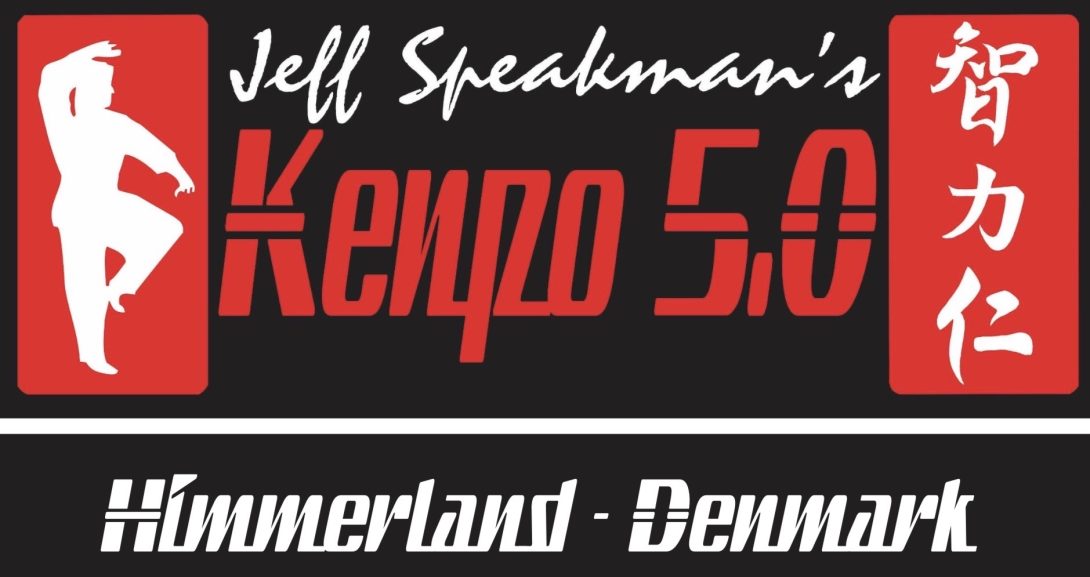Hvor holder i til?
Gymnastiksalen, Dronning Ingrid Hallerne, Jeppe Aakjærs Vej 27, 9640 Farsø
Hvilken stilart træner i?
Fra og med 28.04.21 gik vi fra kun at træne Kyokushinkai Karate til Kenpo 5.0 og er nu tilsluttet Jeff Speakman’s Kenpo 5.0 franchise. Det er stadig Kyokushin grundteknikker.
Hvem kan træne Jeff Speakman’s Kenpo 5.0 Karate?
Alle kan træne kenpo 5.0. Det spiller ingen rolle om du er ung eller gammel, kvinde eller mand – kenpo er for alle, ingen forkundskaber kræves. Vi anbefaler at man mindst er ca 6 år gammel.
Det findes heller ingen øvre aldersgrænse — Kenpo karate er for alle.
Hvor ofte er det træning?
Det er træning for både nybegyndere og viderekommende mandage, onsdage og som privatundervisning. Det hænder også at vi har træning i weekender.
Hvad består træningerne i?
Systemet til Kenpo 5.0 er bygget op af defensive teknikker, så vel som aggressive. Disse er responser på forskellige realistiske angreb som strækker sig fra slag og spark til gulvkampe.
Kenpo 5.0 Karate bruger Sets og Forms som et trænings værktøj. Meningen er at disse fremmer rigtig brug af stillinger og vinkler for at anvende bevægelserne rigtigt i Kenpo 5.0.
Ved siden af teknikkerne, Sets og Forms træner vi kondition, styrke, smidighed, balance, koordination og bevægelighed.
Hvilken betydning har emblemet i Kenpo? (Uddrag fra Ed Parker’s Infinite Insights Into Kenpo)
THE TIGER – represents earthly strength derived during the early stages of learning. This is the stage where the individual is more impressed with his own physical prowess.
THE DRAGON – represents spiritual strength which comes with seasoning. This mental attitude is attained during the individual’s later years of training. It is placed above earthly strength (as indicated and observed on the patch) since the individual at this stage has learned to develop humility and self-restraint. The attitude of the Dragon is the ultimate goal of KENPO. Armed with this attitude an individual will not be afraid of the opponent but of what he can do to the opponent. Thus he turns his back and walks away from an unwarranted conflict confident that he could have been the victor.
THE CIRCLE – is symbolic of several things: It depicts life itself, a continuous cycle where there is no beginning nor end. So is it with the art of KENPO, it too is a cycle of perpetual and unending movement or motion. Techniques follow a cycle, movements are part of a cycle, physical prowess, humility and self-restraint are no more than components of a progressive learning cycle; (2) All moves evolve from a circle whether they are defensive or offensive; (3) The circle represents the bond of friendship that should continuously exist among IKKA members; and (4) The circle is the base from which our alphabet stems.
THE DIVIDING LINES – in the circle represents: the original eighteen hand movements—directions in which the hands can travel; they are the angles from which an opponent or you can attack or defend; and it forms the pattern in which the feet too can travel— explanation of the Universal Pattern will clarify this.
THE COLORS – represents proficiency, achievement and authority. The circle is GRAY because it is symbolic of the brain—the brain of the IKKA, since the brain has always been referred to as GRAY matter. The WHITE background is significant of the many beginners who form the base of the Art. The YELLOW or ORANGE represents the first level of proficiency—the mechanical stage—the dangerous stage in learning where the student is more impressed with the physical who, like a freshman in college, thinks he knows all of the answers. BROWN, the color of the Tiger’s eyes, represents the advance students though not great in number. Also at this level the student becomes more observant. His eyes, like that of the Tiger, are keen, ever so watchful and critical, always looking up to the higher levels of proficiency, striving for perfection, preparing for the day he bares the label of an expert. This level of expert proficiency is represented by the color BLACK. RED is that of professorship over and above BLACK but yet, as indicated by the colors of the Dragon, there are still traces of WHITE in the Dragon’s eyeball, YELLOW or ORANGE on the Dragon’s fins, BROWN in the iris of the eyeball, and BLACK in the pupils of the eyeball. This is to remind even the Professor that he too should always be so humble and be able to go back to any level, whatever it might be, and perform the things that he expects of others at these levels so as never to demand too much of his students.
THE ORIENTAL WRITING – is a reminder of the originators of our Art—the Chinese. It is in respect to them but not that we serve them. The lettering to the right means KENPO KARATE—Law of the Fist and the Empty Hand—the Art that we practice. To the left it means Spirit of the Dragon and the Tiger—a constant reminder that we want to attain the spiritual level and that the physical level is only a stepping stone or vehicle, that we use to reach the higher or spiritual level.
THE SHAPE – The TOP of the crest of the patch is like a roof which gives shelter to all who are under it. The SIDES)(are curved conversely because like the roof of a Chinese home it is to send evil back to where it came from, whenever it tries to descend. The BOTTOM forms the shape of an ax—it represents the executioner—in the event a member is influenced by evil ideas and thoughts contrary to our philosophy, or shames the IKKA organization, he is cut off, never to co-exist with us again.

Mastery of the art is when the tiger is seen but the dragon prevails.

Seneste kommentarer